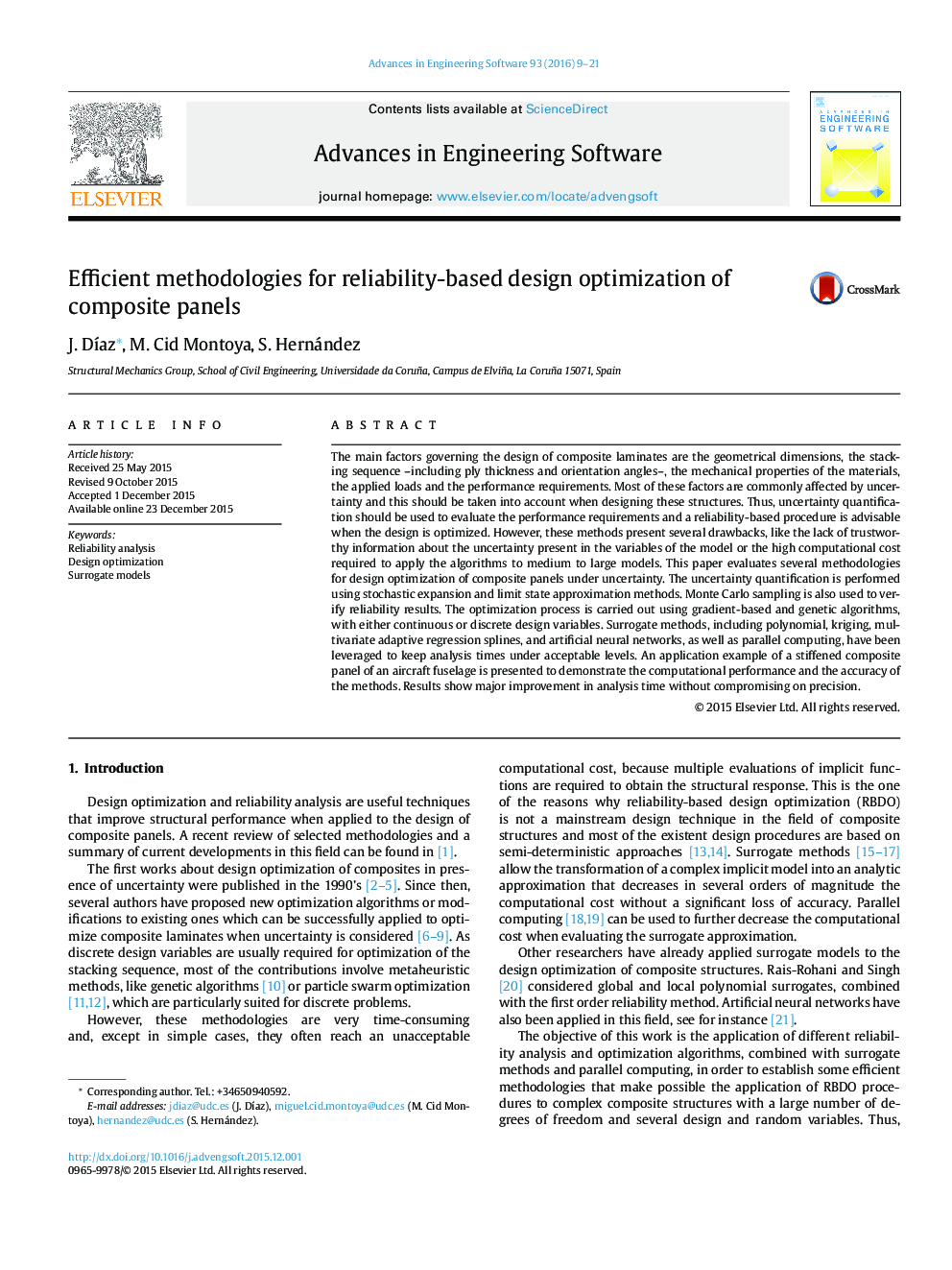| کد مقاله | کد نشریه | سال انتشار | مقاله انگلیسی | نسخه تمام متن |
|---|---|---|---|---|
| 567162 | 1452124 | 2016 | 13 صفحه PDF | دانلود رایگان |
• This paper evaluates several methodologies for design optimization of composite panels under uncertainty.
• The accuracy and efficiency of several reliability analysis methods and surrogate models are studied and contrasted in an RBDO framework.
• An application example of a stiffened composite panel of an aircraft fuselage is presented to demonstrate the computational performance and the accuracy of the methods.
The main factors governing the design of composite laminates are the geometrical dimensions, the stacking sequence –including ply thickness and orientation angles–, the mechanical properties of the materials, the applied loads and the performance requirements. Most of these factors are commonly affected by uncertainty and this should be taken into account when designing these structures. Thus, uncertainty quantification should be used to evaluate the performance requirements and a reliability-based procedure is advisable when the design is optimized. However, these methods present several drawbacks, like the lack of trustworthy information about the uncertainty present in the variables of the model or the high computational cost required to apply the algorithms to medium to large models. This paper evaluates several methodologies for design optimization of composite panels under uncertainty. The uncertainty quantification is performed using stochastic expansion and limit state approximation methods. Monte Carlo sampling is also used to verify reliability results. The optimization process is carried out using gradient-based and genetic algorithms, with either continuous or discrete design variables. Surrogate methods, including polynomial, kriging, multivariate adaptive regression splines, and artificial neural networks, as well as parallel computing, have been leveraged to keep analysis times under acceptable levels. An application example of a stiffened composite panel of an aircraft fuselage is presented to demonstrate the computational performance and the accuracy of the methods. Results show major improvement in analysis time without compromising on precision.
Journal: Advances in Engineering Software - Volume 93, March 2016, Pages 9–21
